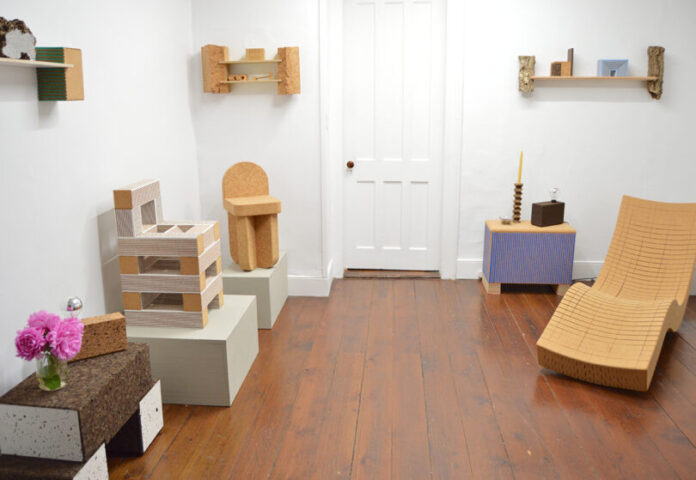Cork is an infinitely recyclable material, boasting a number of other features including fire resistance, buoyancy, and being naturally hydrophobic. Recognizing the sustainable and beautiful characteristics of the material, Brooklyn-based designer and educator Daniel Michalik creates an exhibition of furniture centered around cork, entitled Forest for the Trees. Comprising as much cork content as possible, these pieces either defy gravity, or affirm it. A blocky solidity grounds in the strength and subversive lightness of the material, in contrast with the floating shelves that elevate favorite objects.
When does an object stop becoming simply furniture and when does it become cherished, loved, a keepsake? A strong factor is longevity, childhood chairs, tables, and art sparking memories long buried. Cork represents this almost symbiotic relationship aptly, illustrating a material that doesn’t require the felling of trees, allowing them to live on. In turn, as the forest takes care of us, we must take care of the forest. This circular relationship speaks to responsible stewardship practices, essential in the coming decades. Source material for the pieces featured in Forest for the Trees ranges from reclaimed wine corks to discarded building material, insulation, and upcycled skateboards.
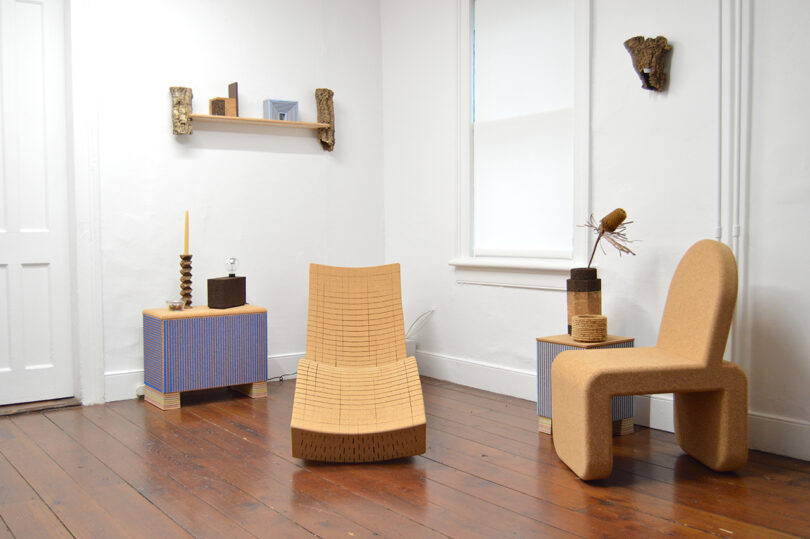
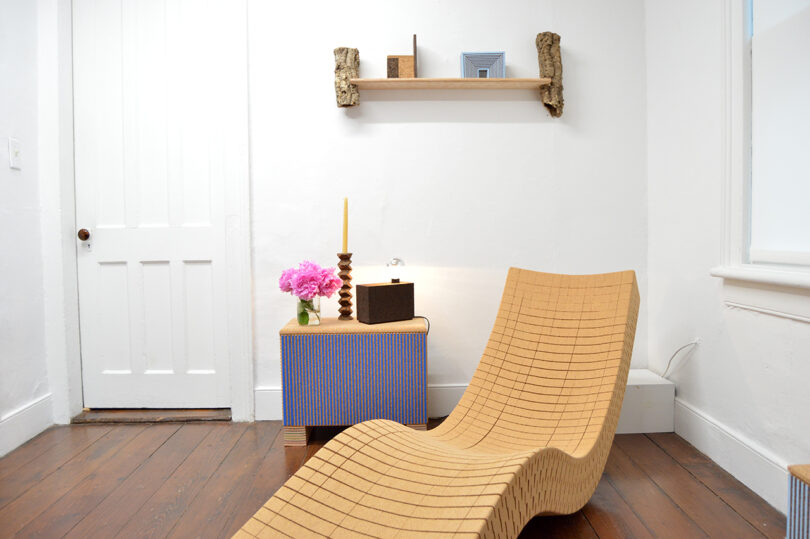
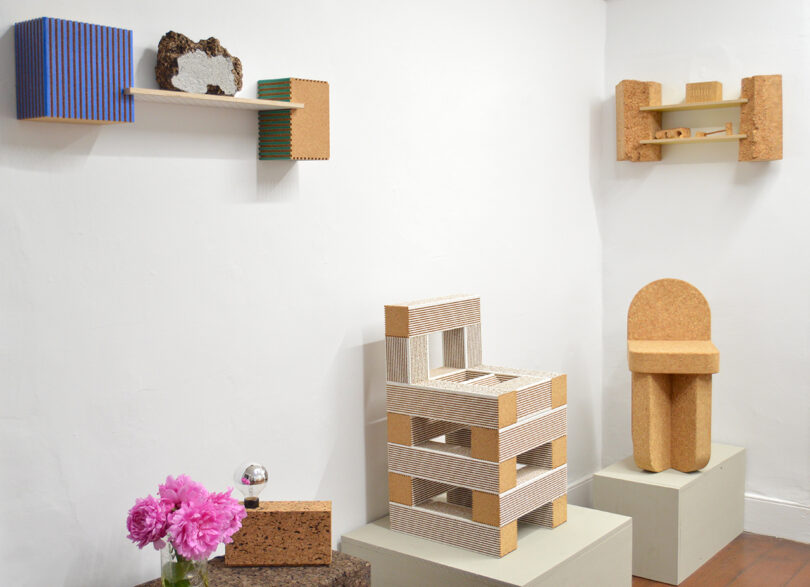
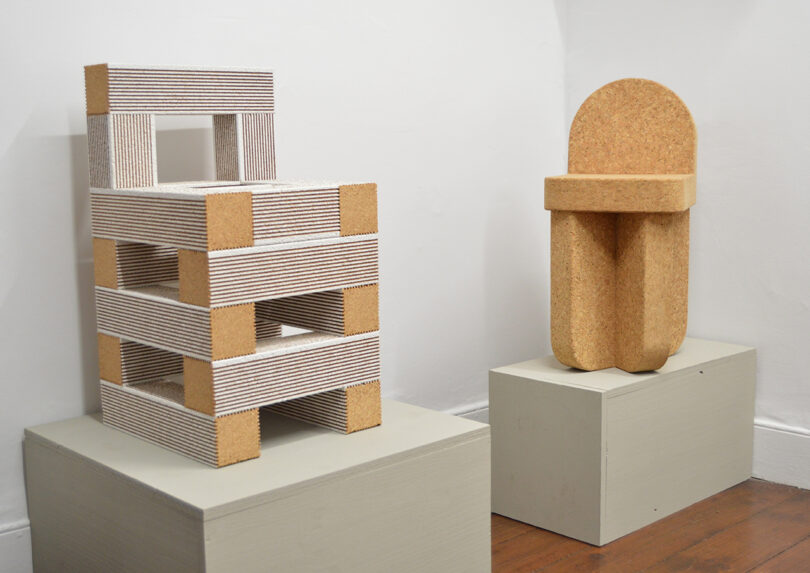
The collection features six new pieces that blend furniture, shelving, and small-scale objects, all centered around cork as a sustainable, expressive material. Each work invites viewers to reconsider what furniture can be made from. The Cortiça Chaise Longue measures seven feet long and is handmade entirely from 100% recycled cork reclaimed from wine bottle stoppers. Although it appears rigid, the sculpted form is intricately sliced to allow a gentle rocking motion in multiple directions. The Striated Seats, with their boxy silhouettes, conceal built-in storage behind vertically striped exteriors made from plywood, cork, pigment, and upcycled skateboards. Other new works include the São Miguel Stool/Side Table, inspired by a trip to the Azores and crafted from compression-molded cork, expanded cork, and pigment; the Santarém Bench, made from expanded cork and pigment; and the Armless Chair, which reimagines classic seating using recycled cork. Rounding out the collection are floating cork shelves, a series of cork lamps, a molded children’s chair created during a cork molding workshop, and the Mozelos Stool, available in three sizes and formed using expansion-molding techniques.
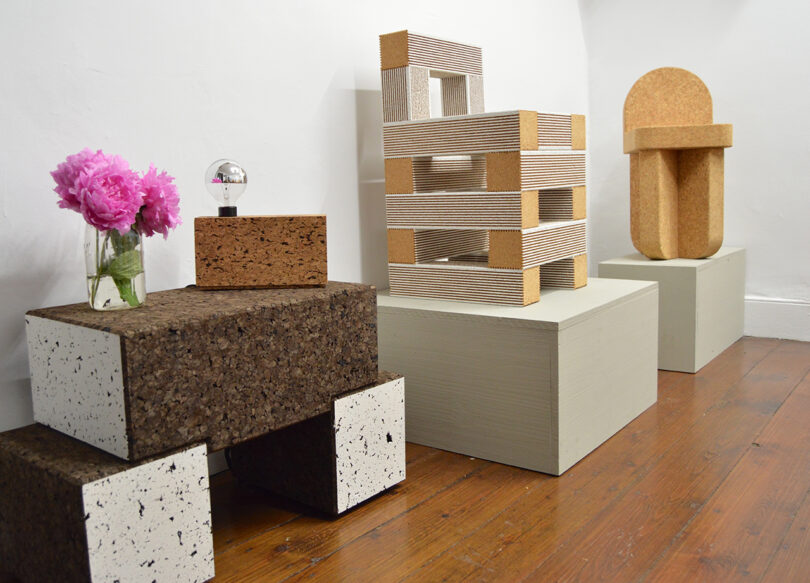
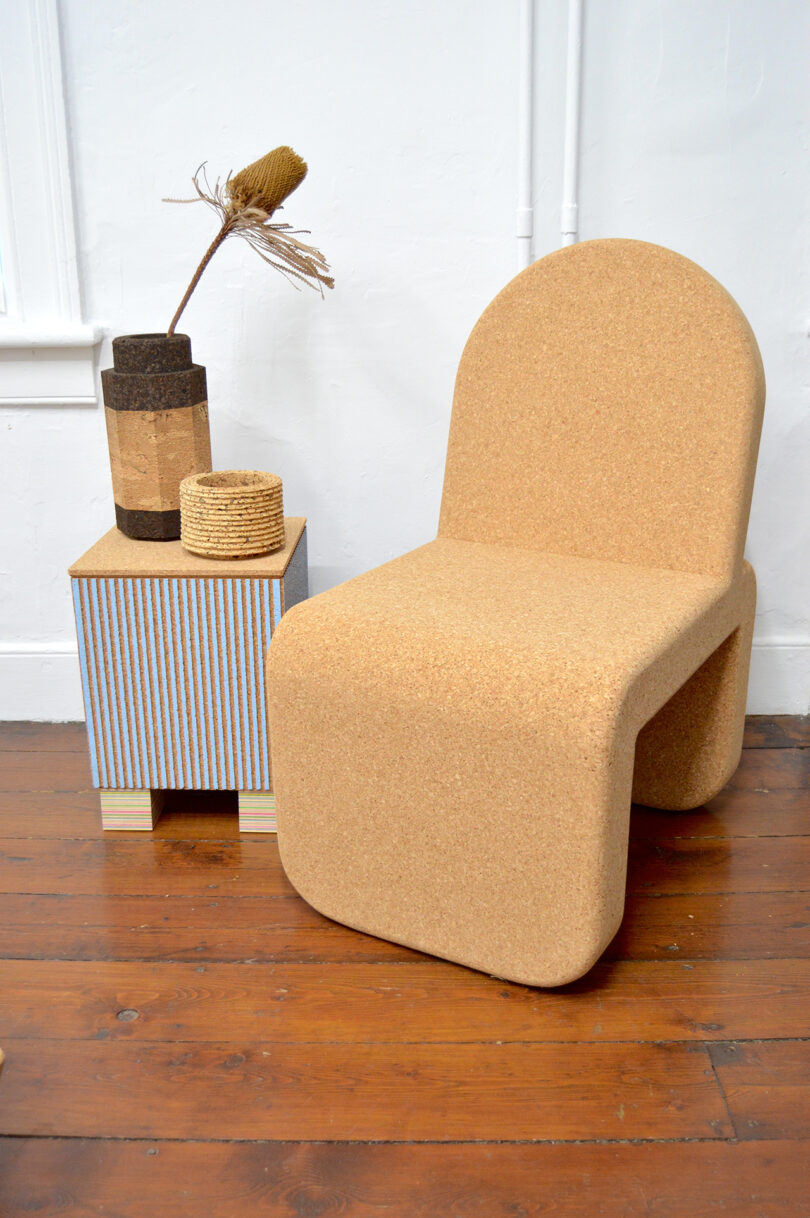
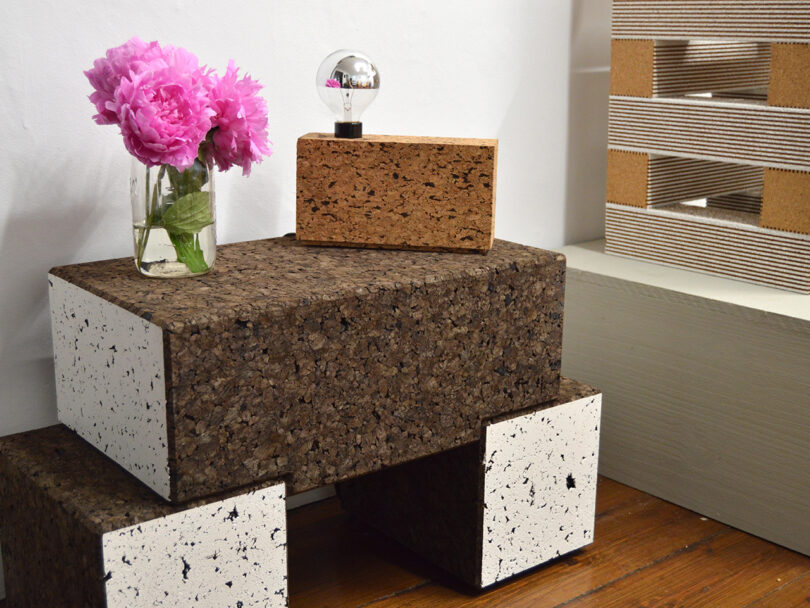
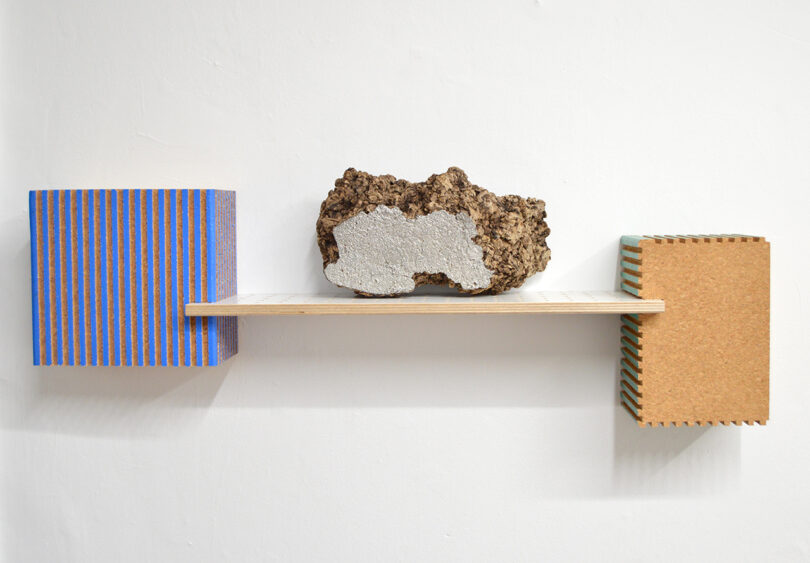
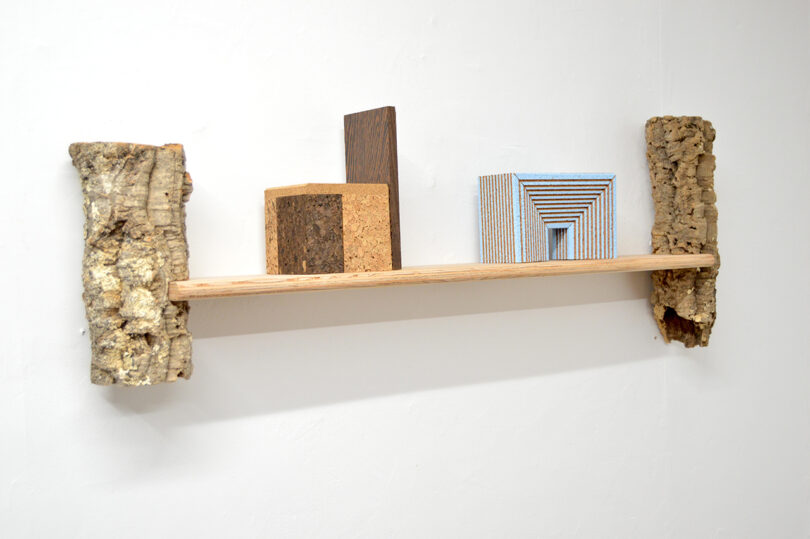
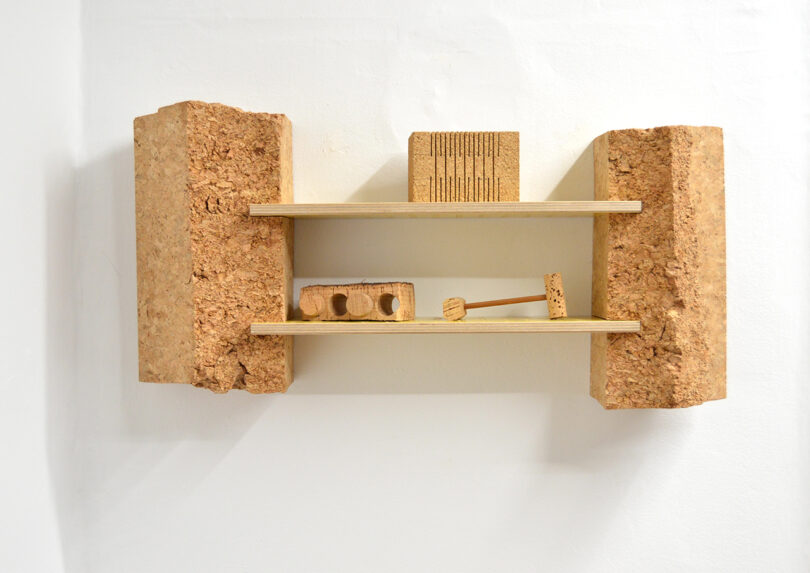
Daniel Michalik is a Brooklyn-based designer and educator working almost exclusively with cork for over 20 years. A deep fascination with the material provides a strong foundation for his work, allowing him to delve deeper into the potential encased within. Material death in cork production is basically nonexistent, providing a truly circular material in that even the dust can be used as biofuel to power facilities. As novelist and poet Wendell Berry states, “All bodies, plant and animal and human, are joined in a kind of energy community. They are indissolubly linked in complex patterns of energy exchange. They die into each other’s life, live into each other’s death. They do not consume in the sense of ‘using up’. They do not product waste. What they take in, they change.” This type of thinking will be critical in the design industry, as we reckon collectively with how we want to define our future.
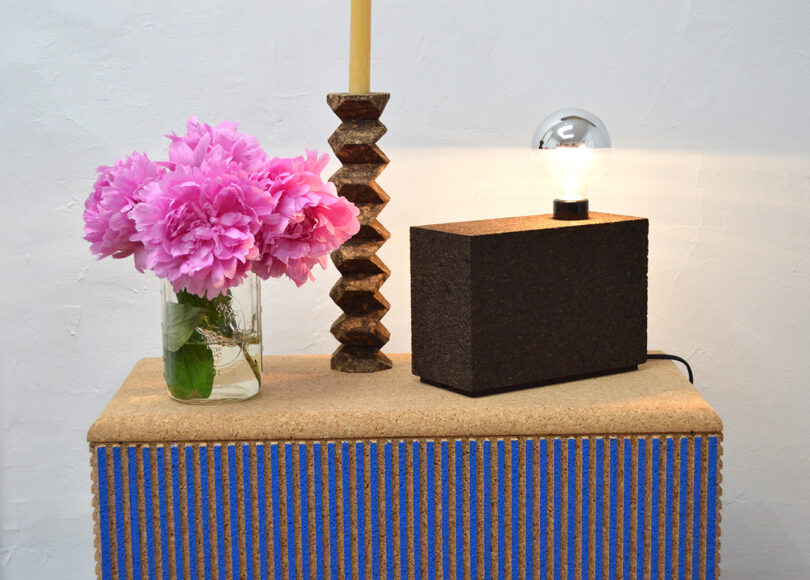
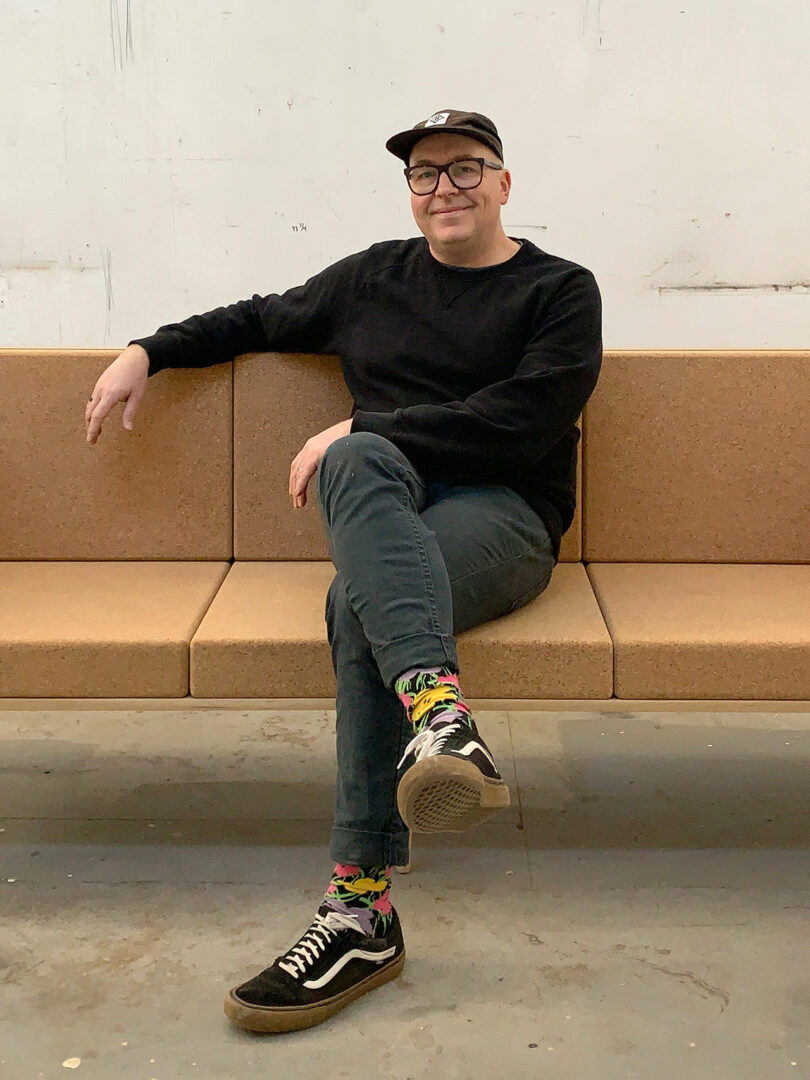
Daniel Michalik \\\ Photo: Courtesy of Daniel Michalik
To learn more about Daniel Michalik and the pieces shown in the Forest for the Trees exhibition, which was presented at Hudson Valley’s Available Items design shop and gallery, visit danielmichalik.com.
Photography courtesy of Daniel Michalik and Available Items.
